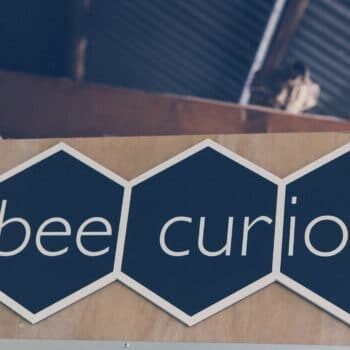Happy World Bee Day

Happy world bee day everyone for the 20th of May! In celebration of World Bee Day we thought we would write a little about our bees here at Twisted and show you there home.
World bee Day was initiated in 2017. It was proposed to help remind us that we should look after our fuzzy, pollinating friends. Pollination is a vital part of the ecosystem and bees, as well as other pollinators, are increasingly threatened by human action. With much of our agriculture depending on pollination, we need to protect our buzzing bees so they can help feed the world.
The bees we have here at TwistED Science are European Honey bees. European Honey Bees are great because they love to live in hives and they like to make a lot of honey. So they don’t mind if we take some 😊. Take a look at the video below to see our bees in their home. Look how busy they are!

Bee societies are amazing. Each hive has a Queen bee, male drone bees, and the female worker bees.
The Queen Bee does all the egg laying. She starts life as a regular bee but the workers feed her exclusively on Royal Jelly. It is this special diet that allows the Queen to mature and grow in to an egg laying bee – the Queen!
While being a Queen sounds great it may not be all it’s cracked up to be. The Queen’s whole job is to lay all the eggs for the hive. That’s all she does. TO make matters worse, if she doesn’t do a good enough job, some of the workers will assassinate her and make a new Queen. It’s a tough gig.
The Drones are the only male bees. They don’t do any work, all they do is fly around and try to mate with Queens of other hives. If they do successfully mate with a Queen, they will usually die afterwards.
The worker bees are females and are the bees that you would be most familiar with. They do all of the work including, collecting pollen from flowers, keeping the hive cool with their wings, and protecting the hive if need be. They are by far the most numerous and are the smallest of the bees.
Bees can’t talk so they dance to communicate. Through dance they can tell each other where flowers are so the other bees can go and collect pollen. The two main types of dance are called the Waggle Dance and the round. Sometimes you can see our bees doing the waggle dance and it’s pretty awesome. They do a wiggly figure eight pattern and the orientation and duration of the dance tells the other bees where the pollen is in relation to the hive.
We love bees here at TwistED Science. Next time you visit come and take a look at our bees in their hive!
– Ben

